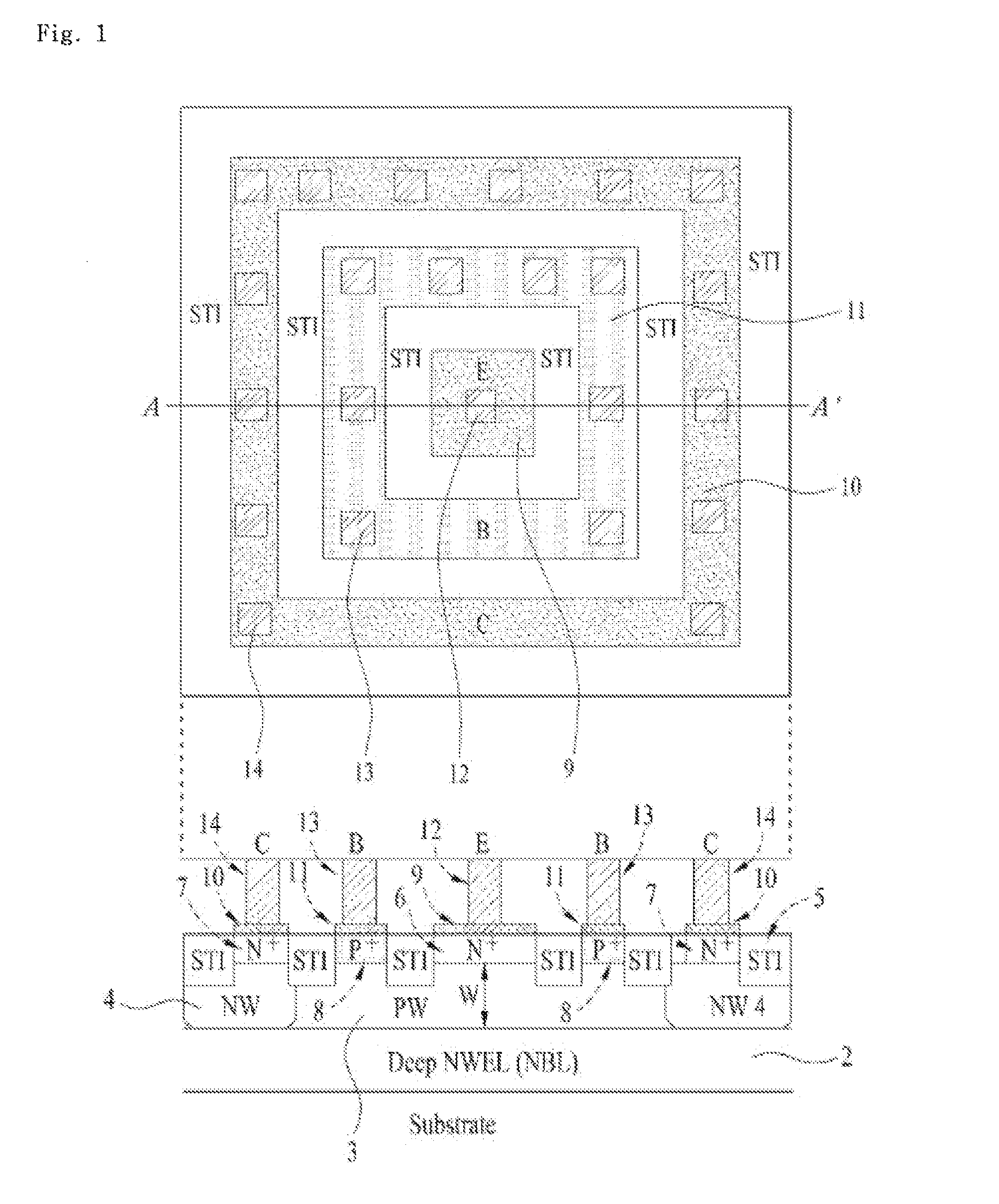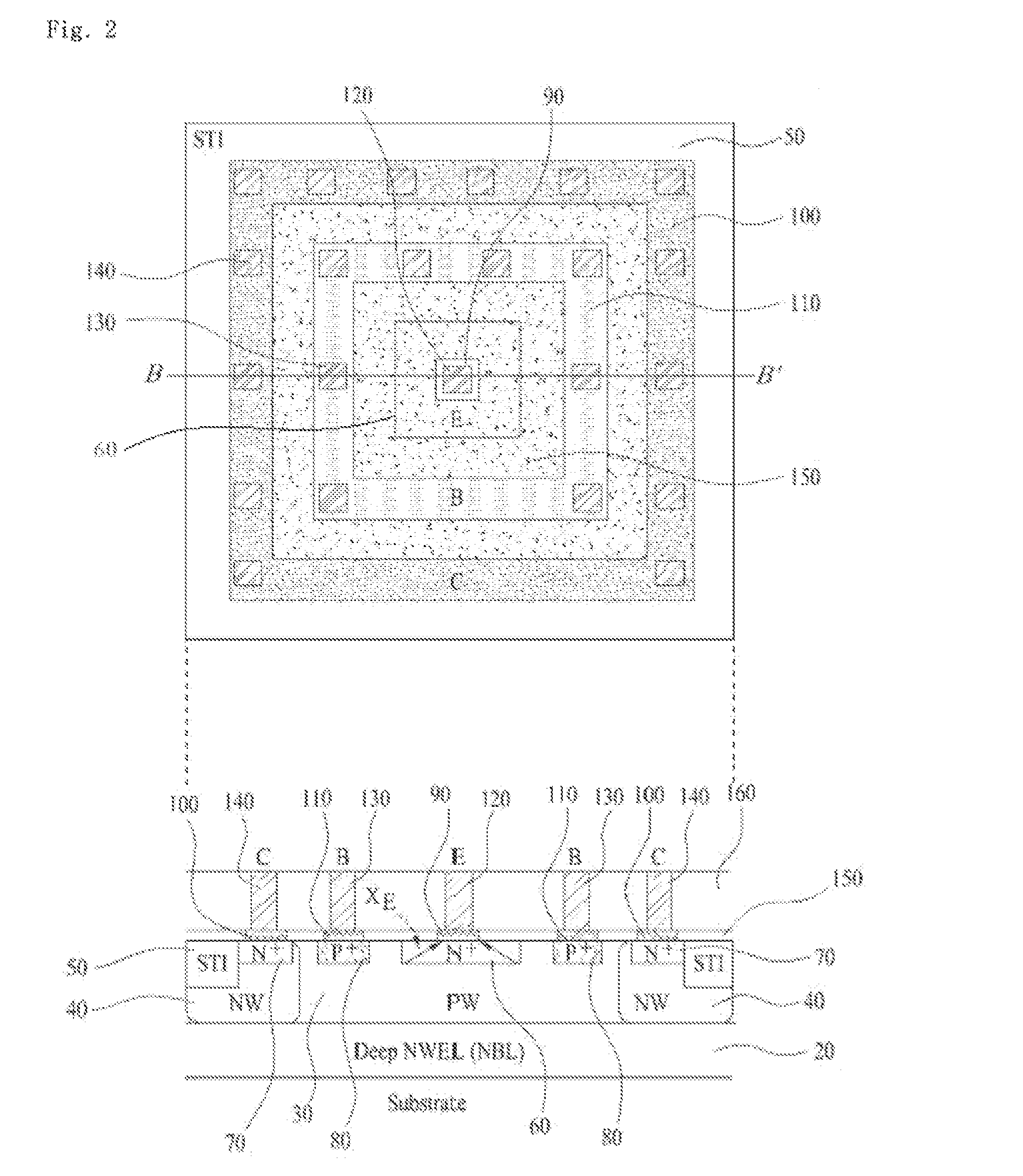Bipolar Junction Transistor Based on CMOS Technology
a bipolar junction transistor and cmos technology, applied in the field of semiconductor technologies, can solve problems such as reducing base resistance, and achieve the effects of high resistivity, high base resistance, and high resistan
- Summary
- Abstract
- Description
- Claims
- Application Information
AI Technical Summary
Benefits of technology
Problems solved by technology
Method used
Image
Examples
Embodiment Construction
[0050]Reference will now be made in detail to the specific embodiments of the present invention, examples of which are illustrated in the accompanying drawings. Wherever possible, the same reference numbers will be used throughout the drawings to refer to the same or like parts.
[0051]A BJT for a CMOS base technology in accordance with a preferred embodiment of the present invention will be described in detail with reference to the attached drawings.
[0052]FIG. 2 illustrates a schematic plan view of a bipolar structure used in a CMOS technology in accordance with a preferred embodiment of the present invention, and a cross section thereof across a line B-B′ shown in the schematic plan view.
[0053]Referring to FIG. 2, there is a plurality of doping regions provided in an active region for forming an emitter, a base, and a collector therein. The structure shown in FIG. 2 illustrates an NPN BJT transistor fabricated on a p-type wafer. A PNP structure similar to that shown in FIG. 2 can be...
PUM
 Login to View More
Login to View More Abstract
Description
Claims
Application Information
 Login to View More
Login to View More - R&D
- Intellectual Property
- Life Sciences
- Materials
- Tech Scout
- Unparalleled Data Quality
- Higher Quality Content
- 60% Fewer Hallucinations
Browse by: Latest US Patents, China's latest patents, Technical Efficacy Thesaurus, Application Domain, Technology Topic, Popular Technical Reports.
© 2025 PatSnap. All rights reserved.Legal|Privacy policy|Modern Slavery Act Transparency Statement|Sitemap|About US| Contact US: help@patsnap.com



